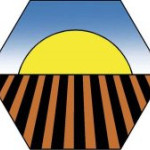- Industry: Earth science
- Number of terms: 26251
- Number of blossaries: 0
- Company Profile:
An international scientific society that fosters the transfer of knowledge and practices to sustain global soils. Based in Madison, WI, and founded in 1936, SSSA is the professional home for 6,000+ members dedicated to advancing the field of soil science. It provides information about soils in ...
An organism capable of utilizing CO2 or carbonates as a sole source of carbon and obtaining energy for carbon reduction and biosynthetic processes from radiant energy (photoautotroph or photolithotroph) or oxidation of inorganic substances (chemoautotroph or chemolithotroph).
Industry:Earth science
A tool for boring into the soil and withdrawing a small sample for field or laboratory observation. Soil augers may be classified into several types as follows: (i) those with worm-type bits, uninclosed; (ii) those with worm-type bits inclosed in a hollow cylinder; and (iii) those with a hollow cylinder with a cutting edge at the lower end.
Industry:Earth science
Condition in which movement of water occurs between flow regions, e.g., macropore to micropore, as a result of gradient in hydrualic potential between the regions.
Industry:Earth science
A thin layer of animal or plant tissue which allows some substances to move through them more than others.
Industry:Earth science
A term which connotes that something (an allochthon) is derived from someplace else, or is not indigenous to a site or area. For example, the allochthonous parent material of an alluvial soil, or an allochthonous community of organisms that invaded an area (i.e., an 'allochthonous flora').
Industry:Earth science
High level of bases in soil material, specified at family level of classification.
Industry:Earth science
Si4Al1. 5Mg0. 5O10(OH)2Ca0. 25 An aluminum silicate (smectite) with a 2:1 layer structure composed of two silica tetrahedral sheets and a shared aluminum and magnesium octahedral sheet. Montmorillonite has a permanent negative charge that attracts interlayer cations that exist in various degrees of hydration thus causing expansion and collapse of the structure (i.e., shrink-swell). The calcium in the formula above is readily exchangeable with other cations.
Industry:Earth science
